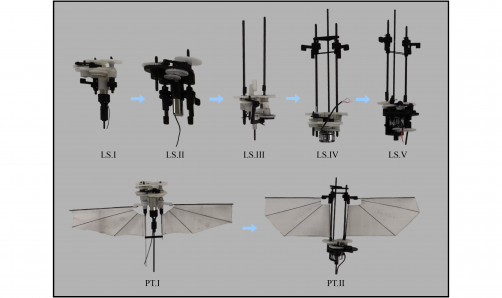BREAKING: A groundbreaking study from a collaborative team at Beihang University and Tsinghua University has just unveiled a revolutionary lift system for flapping wing micro air vehicles (FWMAVs), addressing critical challenges in performance and efficiency. This innovative research, titled “Lift System Optimization for Hover-Capable Flapping Wing Micro Air Vehicle,” was published on October 25, 2023, and is poised to transform the field of aerial robotics.
FWMAVs have long struggled with enhancing lift and reducing power consumption. Current models, whether motor-driven or using intelligent materials, face significant limitations. Intelligent material-driven vehicles often lack controllability, while motorized versions fall short of mimicking the high maneuverability seen in nature, particularly in hummingbirds. The new study proposes a solution that could change the game.
The research team integrated elastic energy storage elements at the wing root, mirroring the musculoskeletal system of hummingbirds. This unique approach enables periodic energy storage and release during flight, allowing for a maximum flapping angle of 154°. Through rigorous testing, they optimized a new wing design, dubbed 80-455, featuring advanced materials, a wingspan of 80 mm, and a chord length of 45 mm.
Key findings include a remarkable lift capability of 31.98 g, achieved with a wingspan of 175 mm and a total weight of just 10.5 g. The weight of the fuselage was reduced by 30.4%, from 2.3 g to 1.6 g, while maintaining structural integrity. This optimization not only enhances lift but also decreases power consumption by 4.5% under identical lift conditions.
In flight tests, the prototype demonstrated the ability to hover continuously for approximately 1 minute at 50% throttle while executing rapid ascent maneuvers, showcasing exceptional aerodynamic efficiency and flight reliability.
The implications of this research are enormous, with potential applications spanning from environmental monitoring to search and rescue operations. With FWMAVs leveraging this new technology, capabilities in aerial maneuverability and energy efficiency could see dramatic improvements.
The full paper is accessible for further details at https://doi.org/10.1007/s11465-024-0790-6. As the field of micro air vehicles evolves, this study marks a pivotal step forward, igniting interest and excitement in the future of aerial robotics. Stay tuned for more updates on this developing story.







